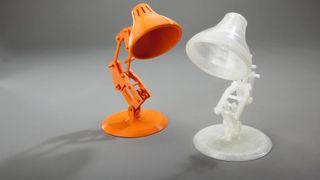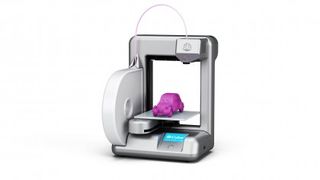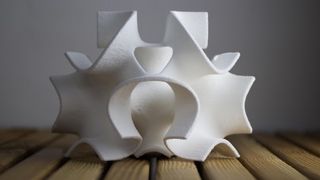Plastic fantastic: why 3D printing is heading to a home near you
Taking printing to another dimension

An early shot against the bows of the pirates has been taken by a Californian startup named Authentise. The company has developed a marking technology that prints unique identifiers into 3D objects, meaning that they can't be digitally scanned without the original purchaser being tracked down. "Each object printed will include one or multiple identifiers that enable investigators to trace any party along the value chain; the designer, the printer, and any intermediary," writes the company.
The other spectre that's looming over the industry is an environmental one. While 3D printing techniques tend to use less material than conventional machining, there's an argument that putting a 3D printer in every home may continue to fuel the western world's unsustainable addiction to useless plastic trinkets.
This problem may already be starting to be addressed, with the invention of small extruders that eat up plastic waste and turn it into the raw material necessary for 3D printing. With a bit of luck, it doesn't seem impossible that packaging waste may eventually be able to be recycled within the home into other useful products. Such technology would also have a vast impact in the developing world.

Despite these possible hurdles, most analysts are bullish on the prospects for 3D printing. Pete Basiliere from Gartner research wrote in a blog post: "Consumer 3D printing has moved beyond needing technology evangelists to market itself." Investment research group Zacks agree, saying: "The 3D printing market presents a favorable long-term opportunity," and IDC estimate that shipments will grow ten times in the next three years, saying: "The fast-paced evolution of 3D printing has moved well beyond early adopters and hobbyists, and is now being utilized regularly in business applications where substantial cost and time-to-market benefits are gained."
Meanwhile, as consumers start eyeing up basic 3D printers, the cutting edge has moved on to food. 3D Systems has partnered with Hersheys to make 3D-printed chocolate and sweets using the company's ChefJet model, while Italian food giant Barilla is looking at doing the same for pasta. Artists are also starting to use the technology to fabricate more intricate artworks, while doctors are using 3D printing in Sudan to fabricate prosthetics.

Will 2014 be 3D printing's year? "3D printing is at its inflection point" writes Basiliere. "Shipments of 3D printers are taking off and are poised for a "hockey stick" growth curve."
But what's still lacking to convert the mainstream is a compelling application for the technology. We may not have long to wait, he adds: "We expect that something that can only be created at home on a 3D printer will hit the scene by 2016."
Get daily insight, inspiration and deals in your inbox
Sign up for breaking news, reviews, opinion, top tech deals, and more.
So there you go - 2014 might not be the year of 3D printing, but you're going to love 2016.












